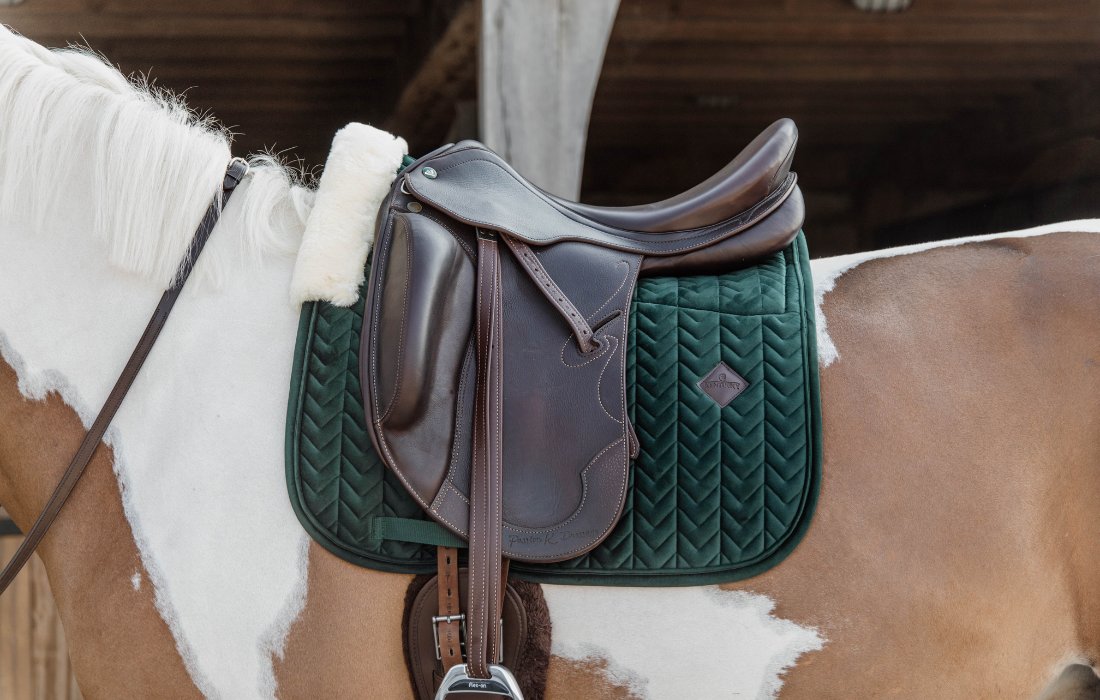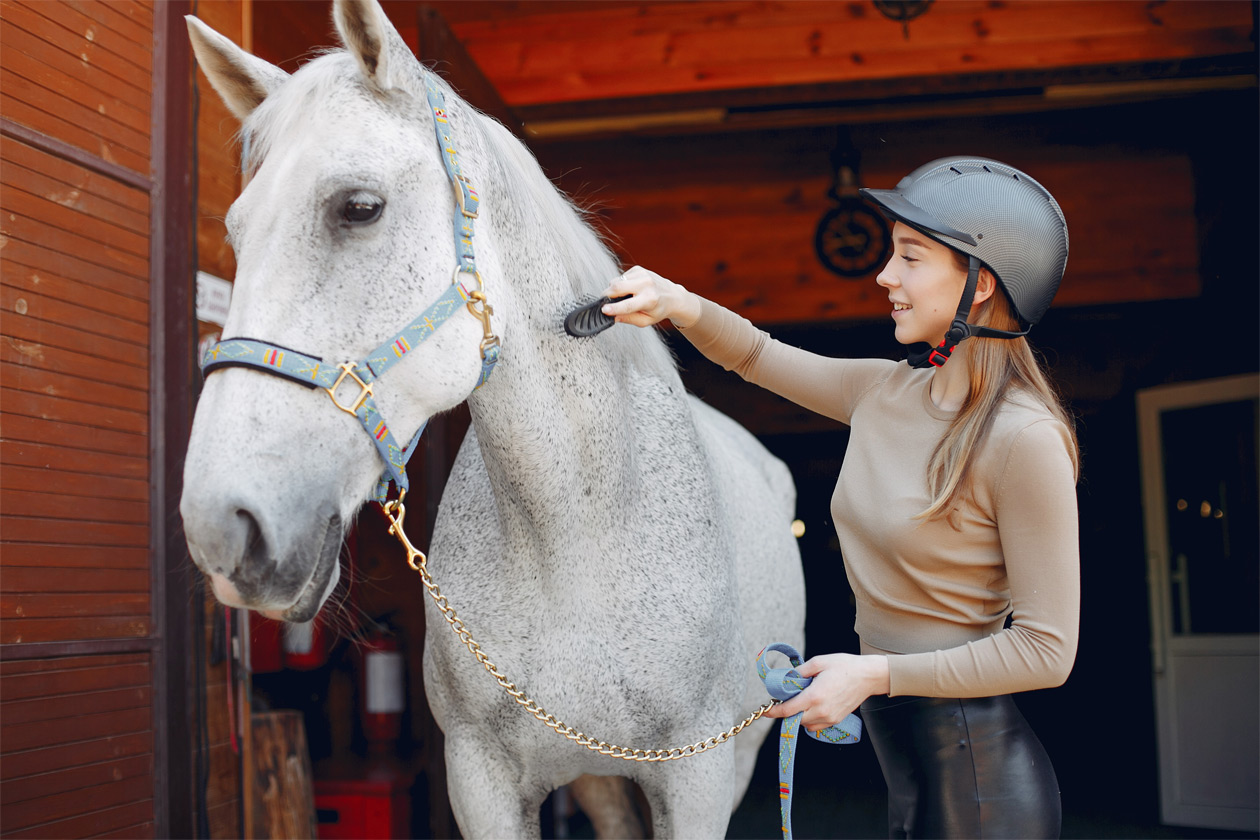The question, ‘why do horses wear ear bonnets?’ is often asked by many people, especially those new to the world of equestrian sports and horse care. Whether you’re a seasoned rider or someone who simply admires horses, understanding the importance of ear bonnets can provide insight into horse well-being and performance. Ear bonnets have become a common sight in horse shows, competitions, and even in casual riding. But what exactly are they, and why are they so widely used?

Understanding Horse Ear Bonnets
What are Ear Bonnets?
Ear bonnets, also known as fly veils or ear nets, are accessories fitted over a horse’s ears and head, featuring a fabric design that covers the ears and may extend to cover part of the horse’s neck. They come in various styles and materials, often made from soft, breathable fabrics like cotton or mesh, adorned with decorative elements or logos of the rider’s team or country.
The Purpose Behind Ear Bonnets
The primary reason why do horses wear ear bonnets is to protect their ears from flies and other insects. Horses’ ears are sensitive, and when insects are constantly buzzing around, it can be highly irritating and distracting for them. By wearing ear bonnets, horses can stay more focused on their rider’s commands and the task at hand, whether it’s during a competition or on a casual ride.
Noise Reduction Benefits
Another significant reason for using ear bonnets is noise reduction. Horses have a keen sense of hearing, and loud noises can easily startle or distress them. Ear bonnets can help muffle ambient sounds, providing a calmer environment for the horse. This is especially beneficial during competitive events where the atmosphere can be quite noisy.

Health and Comfort
Preventing Ear Infections
Fly bites and other insect irritations can lead to ear infections and other health issues in horses. By protecting the ears with a bonnet, these problems can be minimized, ensuring the horse remains comfortable and healthy.
Cooling and Comfort
Many ear bonnets are designed from breathable materials, allowing for proper airflow. This helps in keeping the horses’ ears cool, especially during hot weather conditions or intense physical activities.

The Fashion Statement
Style and Customization
Ear bonnets are not just functional; they have also become a fashion statement in the equestrian world. Riders often choose bonnets that match their outfits, horse tack, or even the colors of their team. This adds a personalized and professional touch to their appearance during competitions.
Recognition and Identity
In competitive events, horses wearing distinctive ear bonnets can easily be recognized, aiding spectators and judges in identifying them. This can be particularly useful in events with numerous participants.

Types of Ear Bonnets
Standard Ear Bonnets
These are the most common type of bonnets, designed primarily for fly protection. They are simple, lightweight, and often come in various colors and patterns.
Soundproof Ear Bonnets
These bonnets are designed with additional padding and materials to further reduce noise. They are ideal for horses that are particularly sensitive to sounds or for environments where loud noises are prevalent.
Winter Ear Bonnets
Made from thicker materials, these bonnets provide additional warmth, protecting the horse’s ears from cold weather while still offering the same fly protection and noise reduction benefits.
Using Ear Bonnets Correctly
Fitting the Ear Bonnet
To ensure maximum comfort and effectiveness, the ear bonnet must be properly fitted. It should snugly cover the horse’s ears without being too tight or too loose. A well-fitted bonnet stays in place even during vigorous activities.
Maintaining the Ear Bonnet
Regular cleaning of the ear bonnet is essential to maintain hygiene and extend its lifespan. Depending on the material, most bonnets can be hand-washed or machine-washed, maintaining their quality over time.
FAQs about Ear Bonnets
Why do some horses not wear ear bonnets?
Not all horses require ear bonnets. It depends on the environment and the horse’s sensitivity to flies and noise. Some horses may not be bothered by such irritants or may be in areas where these issues are not prevalent.
Can ear bonnets improve a horse’s performance?
Yes, by reducing distractions from flies and noise, ear bonnets can help horses focus better, potentially enhancing their performance in competitions or training sessions.
Are ear bonnets used in all equestrian disciplines?
Ear bonnets are commonly seen in disciplines like show jumping, dressage, and eventing. However, they can be used in various other disciplines and casual riding if the rider feels the benefits are necessary for their horse.
Conclusion
In conclusion, ‘why do horses wear ear bonnets?’ is a question with multiple answers rooted in the well-being and performance of the horses. From protecting against insects to reducing noise and making a fashion statement, ear bonnets play a significant role in equestrian activities. Understanding their benefits and proper usage can enhance both the rider’s and the horse’s experience, making them a valuable accessory in the equestrian world.
Want to learn more about horse care and equipment? Check out this comprehensive guide on proper horse bridle usage.
Further Resources
put a bridle on horse, bridle a horse, and horse bridle cost to expand your knowledge on horse equipment.
As an Amazon Associate, I earn from qualifying purchases.